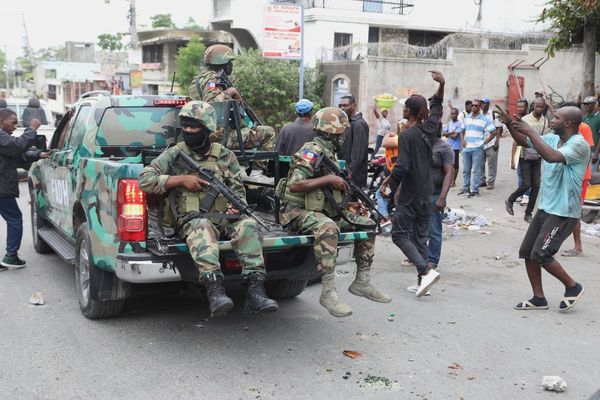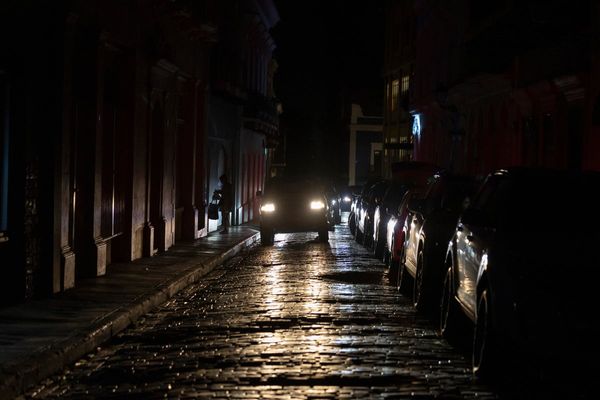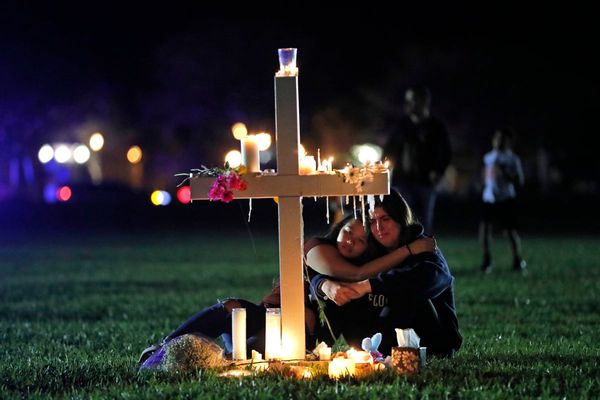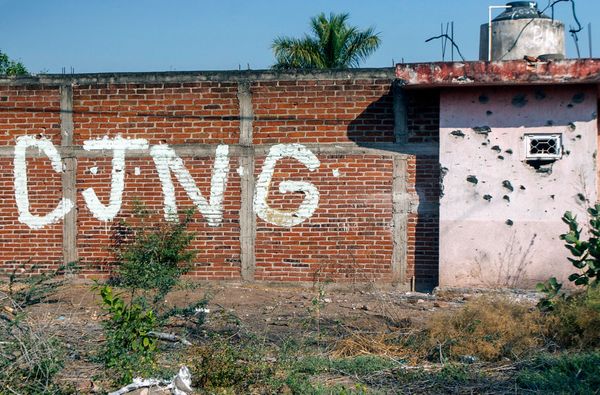
On a lonely stretch of highway that snakes through the North Island stands the town of Whangamōmona, New Zealand’s only self-declared “republic,” replete with its own borders and passport.
Earlier this year, it held its biennial jubilee and presidential “elections” where locals participated in old-fashioned carnival amusements: racing sheep, cracking whips and swimming in tanks with eels.
The “elections” are openly rigged, and past winners include a goat and a poodle. The winner is presented with a presidential chain fashioned by beer bottle tops and boar’s tusks.
President John Herlihy has held the role for eight years. He says his children, grandchildren and friends pushed him into it, and it keeps him busy.
Whangamōmona has a handful of buildings including a pub, arts and crafts shop and a small school. But there are challenges as the eccentric town sees growing numbers of tourists and pressure to upgrade its internet availability, which some residents would prefer to live without.
“How many visitors can we handle? We get peopled out,” Herlihy says.
Forgotten World highway
Whangamōmona’s journey to become a republic began in 1989, when a local government reform process redrew the boundaries of district and county councils. The reforms meant the town would be part of the Manawatū-Whanganui region, rather than Taranaki – and residents weren’t happy.
“Someone said, why don’t we … form our own patch. And that evolved into forming a republic,” Stratford district mayor Neil Volzke says. Stratford is about an hour away, the nearest large town to Whangamōmona.
“They elected a president and declared themselves a republic. It’s a mocking of the whole system. But it captured the imagination of people: here’s this tiny, rural community giving the middle finger to the bureaucracy.”
Residents in the republic still pay rates to the Stratford district council and parts of its environmental governance fall under the Manawatū-Whanganui council. The town raises revenue from selling merchandise and passports to visitors for NZ$5 and seeks outside funding to support republic day.
Whangamōmona lies on the narrow State Highway 43, known as the Forgotten World highway, one of the most remote roads in the country. Along the road the land transitions from rich dairy pastures to rolling hills, to steep cattle country, and thickets of native bush that enclose the tiny settlement of Whangamōmona. Its borders are delineated by signage.
Parts of The Forgotten World Highway have only recently been sealed. The road was dug out by early European settlers, who laid rail to transport goods, cattle and passengers through ravines and once bustling towns and tunnels cut into the earth from the region’s coal mining days. When the passenger train made its final stop in the early 1980s, an economic lifeline disappeared, along with the population.
Today, Whangamōmona and the surrounds are home to an estimated 150 residents, but it’s difficult to get an accurate figure as some locals resist filling out the census. There’s no store for basic supplies like bread and internet connection is marginal.
Locals tried to fight the installation of mobile phone coverage, Volzke says.
“They loved witnessing the moment tourists would pull out their phone and discover no service.”
“There’s some real characters. Some are four, five generations-deep farmers, others are contractors doing things like fencing. There are transients, others are seeking to escape the system and authority who can live off-grid in alternative lifestyles,” he says.
‘It’s old New Zealand’
Tourism has created some tension in the town between needing tourist dollars to keep the place alive and maintaining their independent way of life. Herlihy laments the sealing of the old road.
“I wanted it left as it was. But there was a push for tourism by the council,” he says.
Herlihy says there’s a cult status to the place, especially with international visitors.
“During summer, it’s becoming impossible to find a table at the hotel.”
At the Whangamōmona Hotel, visitors can buy Whangamōmona passports, or receive a formal stamp in their own, which provides the township NZ$15,000 annually and contributes to upkeep of the handful of buildings.
Vicki Pratt has owned the hotel for 11 years, and it’s now for sale. Pratt says the hotel is “iconic” and “warm” and notes there’s never been a fight in the bar. Recently, the hotel got mobile coverage, but is still mostly without wifi, with some pockets available outside.
“Before, everyone had to mix and mingle, like the old days. If I had my way I’d block all internet in this area”.
The hotel operated as a hospital during the 1918 influenza. Guests have reported ghost sightings, including road worker Joseph Lewandowski, born in 1879 and whose portrait Pratt commissioned to depict the hardship faced by early residents.
“But people are the salt of the earth here – it’s old New Zealand. They always pay it forward. If someone breaks down on the roadside they’ll be helped, if someone passes away the community will chop firewood or shear their sheep.”
It takes a certain kind of person to live here, agrees local arts and crafts proprietor Tracey Haskell. Even after 20 odd years she isn’t considered a local.
“People are welcomed, but you’ve got to show you have something to contribute”.
“I love the remoteness – I could have been born in another century. I like that you have to make an effort to do your shopping.” Haskell lives 19km down the highway and says Whangamōmona is now too busy for her.
“It’s a tight knit community, though in different ways. We’re all fairly different and staunch. This place represents the freedom to do what I want.”







